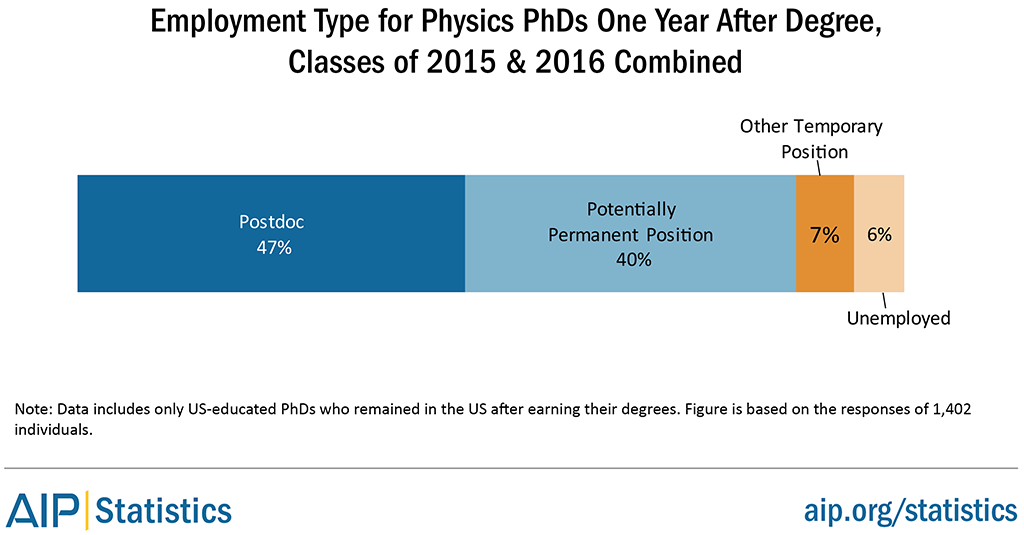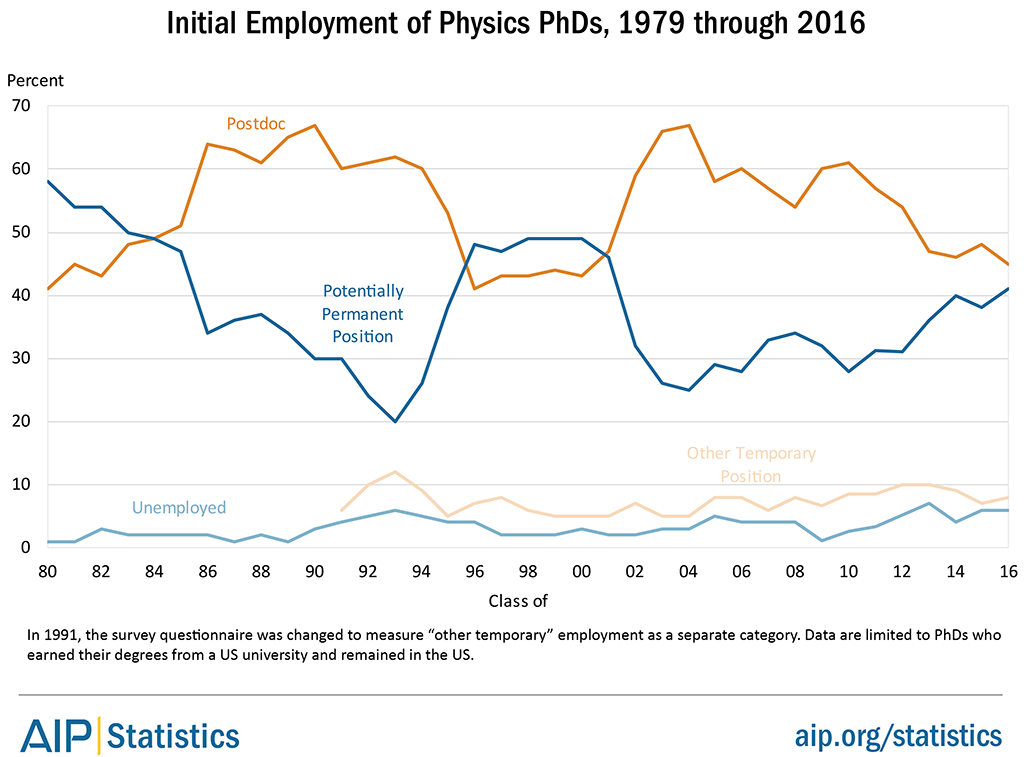Latest Employment Data on New Physics & Astronomy PhDs

Richard Fienberg AAS Solar Eclipse Task Force
Where do you find the latest data on education, careers, and diversity in physics, astronomy, and related physical sciences? At the American Institute of Physics (AIP) Statistical Research Center (SRC)! The AAS is one of AIP's member societies, and if you don't regularly browse the SRC's survey data and other reports, you're missing out on a lot of valuable information.
Patrick Mulvey and Jack Pold of the SRC have recently released two reports based on the annual AIP Follow-up Survey of physics and astronomy PhD recipients, classes of 2015 and 2016:
- Physics Doctorates: Initial Employment — About half of physics PhDs accept a postdoctoral fellowship, making it the most common type of employment for degree recipients. Salaries for physics PhDs vary depending on the type of initial employment and sector. Those employed in potentially permanent positions in the private sector typically had significantly higher starting salaries than the other employment types, with a median of $105,000 and a very wide range.
- Physics Doctorates: One Year After Degree — The proportion of new physics PhDs accepting potentially permanent positions in the year after receiving their degree has been increasing for over a decade.
Here are brief excerpts from the reports:
Almost half (47%) of physics PhD recipients in the combined classes of 2015 and 2016 held a postdoc in the winter following the year they received their PhD. Postdocs are temporary positions with a defined period of mentored training in research where individuals acquire professional skills and research independence. Forty percent of the new PhDs were working in potentially permanent positions. The least common initial post-degree employment category, other temporary positions (7%), are similar to postdocs in that they have a specified ending date and tend to be concentrated in academic settings but are more focused on teaching. Additionally, some recent PhDs (6%) indicated that they were unemployed and seeking a job in the winter following receiving their degree.

Although still the prevailing post-PhD outcome, the proportion of new physics doctorates accepting postdocs has been declining for the past decade or so. This decline in the proportion accepting postdocs, 67% in 2004 to 45% for the class of 2016, has been offset by an increase in the fraction of new PhDs accepting potentially permanent positions. In recent years, 5%–10% of new physics PhDs have accepted other temporary positions. The difference between potentially permanent positions and other temporary positions is that the temporary positions, which are mostly comprised of visiting professors, lecturers, and research scientists at colleges and universities, have a set ending date; the potentially permanent positions do not. Some PhDs indicated that they were unemployed and seeking employment. This category has averaged about 5% of the respondents in recent years.

Read the full reports:
Physics Doctorates: Initial Employment Physics Doctorates: One Year After Degree

